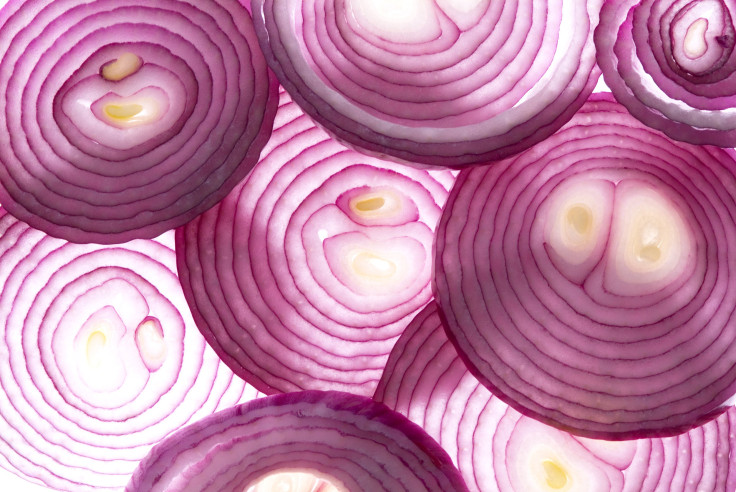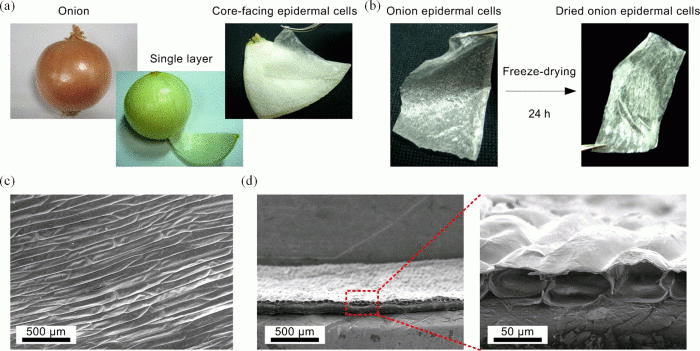Gold, Electricity, And Onion Skins Make For Powerful, Flexible Artificial Muscles

Make way for the newest type of artificial muscle that’s more flexible and bendable than the super strength muscles developed by researchers at the U.S. Department of Energy’s Berkeley Lab in 2013. In a new report published in Applied Physics Letters, scientists outline how they developed artificial muscles using onion skin laced with gold.
It’s a strange combination, but it seems to work: The newly developed muscles are able to expand and contract in different directions like human muscles, something that scientists have struggled with in the past when trying to develop muscles that work just like human ones.
The Taiwanese researchers responsible for the study didn’t set out to use onion skin in particular, but they soon discovered that the epidermis, the translucent layer of onion (not the dry crackly outer layer), was actually ideal for what they were trying to achieve. Real human muscles bend and contract simultaneously, something that has proved to be evasive for scientists trying to emulate it. But in the Taiwanese study, it turned out the onion's epidermis was quite similar to the microstructure they had imagined for the design.
The researchers peeled off a single layer of epidermis from the onion (one-cell thick), treated it with acid to remove the molecule that made the cells rigid, then freeze-dried it and coated it in gold, which made it conduct electricity. The layer of onion skin cells thus no longer had water in them, and only had the cell walls intact. Covering it in two layers of gold (24 nanometers on top and 40 nanometers on the bottom) made it more flexible and allowed it to move like human muscles.

“Artificial muscles are soft actuators with the capability of either bending or contraction/elongation subjected to external stimulation,” the authors write in the abstract. “However, there are currently no artificial muscles that can accomplish these actions simultaneously. We found that the single layered, latticed microstructure of onion epidermal cells after acid treatment became elastic and could simultaneously stretch and bend when an electric field was applied.”
The researchers then experimented with electric currents to make the artificial muscles move. High voltages of 50 to 1000 volts made the artificial muscles contract and bend; through these currents, the researchers were able to make the onions work as tweezers and grip a cotton ball.
“Culturing cells to form a piece of muscle tissue for generating pulling strength is still very challenging,” Wen-Pin Shih of National Taiwain University in Taipei, a lead author of the study, told Smithsonian magazine. “People have tried to use live muscle before. But then how to keep the muscle cells alive becomes a problem. We use vegetable cells because the cell walls provide muscle strength whether the cells are alive or not.”
But the researchers still need to do more research to find if these onion muscles are sustainable and can withstand external factors like moisture, which can penetrate the cell walls.
Source: Chen C, Shih W, Chang P, Lai H, Chang S, Huang P. Onion artificial muscles. Applied Physics Letters. 2015.



























